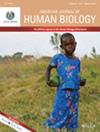Biocultural Determinants of Mothers' Complementary Feeding Decisions in the Urban Brazilian Amazon
Abstract
Objective
Complementary feeding (CF) occurs during a critical period of infant growth and development with life-long health implications. Despite international efforts, there remains significant variation in the adequacy of complementary diets across settings. In Brazil, there is marked variation in adherence to CF guidelines and infant growth outcomes, with the north (Amazon) lagging other regions of the country. This study aimed to characterize the complementary diet and develop a model to explain feeding decisions in the Amazonian city of Belém.
Methods
With a sample of n = 30 mothers, we combined 24-h dietary recalls, a pile-sorting activity, and in-depth interviews to address study aims. Using descriptive statistics, we analyzed the pile-sort data to characterize the evolving complementary diet. Then, using thematic analysis of interview transcripts, we identified the most salient factors shaping mothers' feeding decisions.
Results
While there was variation in opinion regarding the timing of introduction of liquids other than breastmilk and ultra-processed convenience foods, we found high consensus regarding the ideal complementary diet which, beginning at 6 months, met WHO dietary diversity guidelines and evolved with infant age. Three themes—integrating and applying trusted sources of advice, infant readiness and future health, and challenges to feeding ideals—illustrate how socioeconomic, cultural, and infant bio-behavioral cues interact to shape CF.
Conclusion
Efforts to improve infant feeding must move beyond identifying individual factors and toward biocultural models that consider how political–economic and local contexts interact to influence the ethnomedical systems, household sociocultural dynamics, including income, gender, and age-based responsibilities, and power relations that shape feeding behaviors.


 求助内容:
求助内容: 应助结果提醒方式:
应助结果提醒方式:


